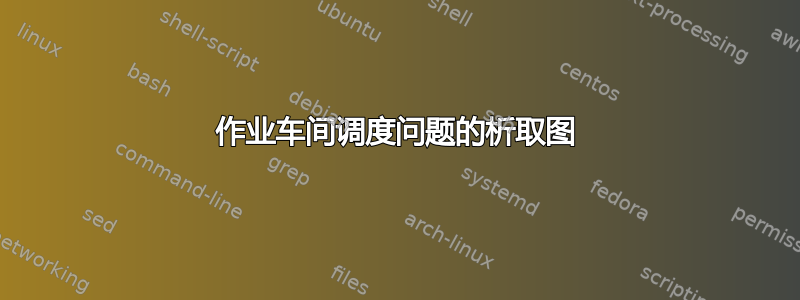
我从这样的事情开始:
\begin{tikzpicture}[ ->, >=Stealth, shorten >=1pt, auto, node distance=2cm, thick, main node/.style={circle,draw,font=\sffamily\Large\bfseries} ]
% Nodes
\node[main node] (b) at (0,0) {b};
\node[main node] (7) at (2,2) {7};
\node[main node] (4) at (2,0) {4};
\node[main node] (1) at (2,-2) {1};
\node[main node] (8) at (4,2) {8};
\node[main node] (5) at (4,0) {5};
\node[main node] (2) at (4,-2) {2};
\node[main node] (9) at (6,2) {9};
\node[main node] (6) at (6,0) {6};
\node[main node] (3) at (6,-2) {3};
\node[main node] (e) at (8,0) {e};
% Solid edges
\draw (b) -- (1);
\draw (b) -- (4);
\draw (b) -- (7);
\draw (1) -- (4);
\draw (2) -- (5);
\draw (3) -- (6);
\draw (4) -- (7);
\draw (5) -- (8);
\draw (6) -- (9);
\draw (7) -- (e);
\draw (8) -- (e);
\draw (9) -- (e);
% Dashed edges
\draw[dashed] (1) -- (8);
\draw[dashed] (8) -- (1);
\draw[dashed] (2) -- (3);
\draw[dashed] (4) -- (5);
\draw[dashed] (5) -- (6);
\draw[dashed] (7) -- (8);
\draw[dashed] (8) -- (9);
\end{tikzpicture}
但按照现有文档完成它非常耗时。谢谢(图片中看到的细箭头可以画成虚线,如代码片段所示)。
答案1
从这里开始放置节点并将它们与两个循环中的值连接起来。
为此,该chains库有助于以规则的方式放置和连接节点。它们的距离通过 给出node distance。
该0节点放置在节点 1/3 和 1/4 西侧中间左侧,以便垂直居中放置。
graph最后,我通过语法/库在现有节点之间添加了一些简单的连接。
代码
\documentclass[tikz]{standalone}
\usetikzlibrary{arrows.meta, chains, calc, graphs, quotes, shapes.multipart}
\begin{document}
\begin{tikzpicture}[
node distance=1cm,
all nodes/.style={shape=circle, draw, minimum size=1cm},
node BF/.style 2 args={
all nodes, node other/.code=,shape=circle,
name=#1 #2,node contents=$#1_{#2}$},
node 7/.style={node BF={B}{#1}}, node 8/.style={node BF={F}{#1}},
node other/.style 2 args={
all nodes, shape=circle solidus, inner sep=.1em, name=#1 #2,
node contents={#2 \nodepart{lower} #1}},
>=Latex, every join/.style={->},
start chain=rows going below,
]
\foreach[count=\rowi] \rows in {{1, 3, 6, 7, 3, 6, -33},
{8, 5, 10, 10, 10, 4, -61},
{5, 4, 8, 9, 1, 7, -44},
{5, 5, 5, 3, 8, 9, -45},
{9, 3, 5, 4, 3, 1, -32},
{3, 3, 9, 10, 4, 1, -39}}{
\node[on chain, node other=\rowi 1];
\tikzset{start branch={row\rowi} going right}
\foreach[count=\coli from 2] \elem in \rows
\node[on chain, node \coli/.try=\rowi,
node other=\rowi\coli, join=by "$\elem$"];
}
\node[all nodes, left=2cm of $(3 1.west)!.5!(4 1.west)$](0){$0$}
foreach \rowi in {1, ..., 6}{
(0) edge[every join, "0" sloped] (\rowi\space 1)};
\path[dashed] graph[edges=every join, use existing nodes]{
1 1 ->[bend left] 3 1 ->[bend left] 5 1,
2 1 ->[bend right] 4 1 ->[bend right] 6 1
};
\foreach \up/\Row/\above/\rows in {+/1/above/{1,2,3}, -/6/below/{6,5,4}}
\foreach[count=\i from 0] \row in \rows
\draw[rounded corners, every join] (0)
|- node[at end, \above] {$0$} ([shift={(0,\up 1)}]B \Row.center)
to[out=0, in/.evaluated={\up(\i==0?135:60)}, out looseness={1+1.5*sign(\i)}](F \row);
\end{tikzpicture}
\end{document}




